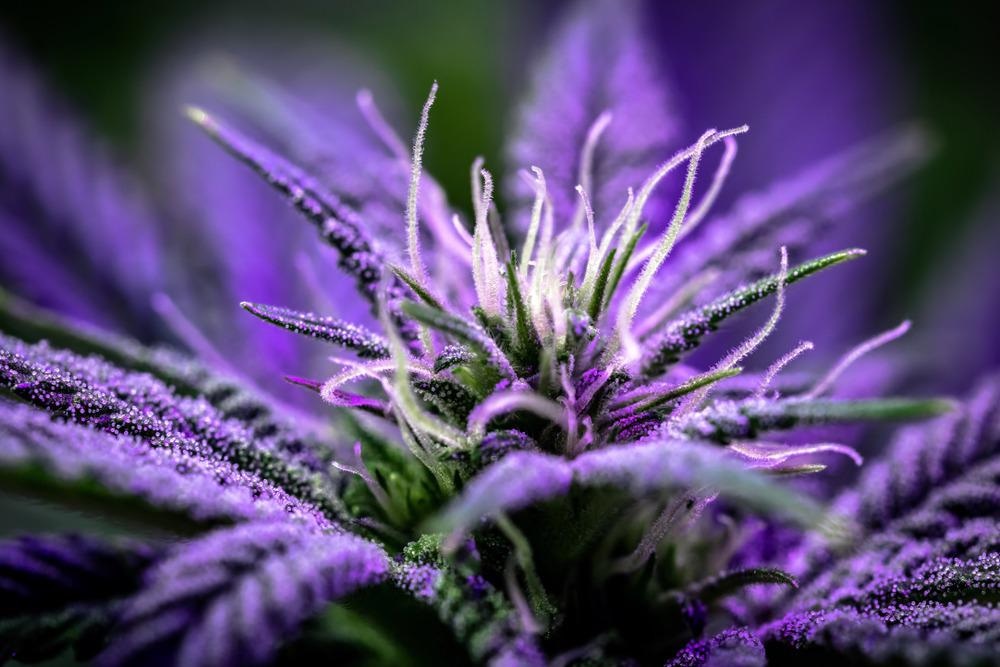In this interview, Shianna Hines, the Senior Field Application Scientist for cannabis and hemp-related items at PerkinElmer, talks to AZoLifeSciences about testing cannabis for impurities and contaminants.
Please could you start by introducing yourself and your role?
My name is Shianna Hines, and I am the Senior Field Application Scientist for cannabis and hemp-related items for PerkinElmer. I work with all kinds of cannabis-infused products, including flowers, tinctures, edibles, and gummies – any product with cannabis as an ingredient.
How much of an issue is the potential presence of heavy metals in cannabis and hemp samples?
Heavy metals are Class 1 category elemental impurities to the FDA - a group of toxicants that must be evaluated under all circumstances- which highlights its seriousness. Heavy metals are known to be highly toxic, especially because we cannot efficiently remove them from the body after exposure, meaning they can accumulate over time, leading to extended exposure and a major health risk.
Many juridictions will require testing for additional elements, but these four elements are highlighted in product risk assessments and across all potential sources of elemental impurities and routes of administration.
As cannabis becomes a more prevalent commodity and the industry continues to grow, government regulations and oversight will continue to increase.
What are some of the most notable challenges when testing cannabis for impurities and/or contaminants?
Cannabis is a very complex product. A cannabis flower bud includes a range of different components, including terpenes, cannabinoids, flavonoids, sugars, fats, waxes, starches, and cellulose.

Image Credit: ShutterStock/TayHamPhotography
The complexity of cannabis samples and matrices leads to some specific analytical challenges when testing for heavy metals. Any method used must offer low detection limits, especially for arsenic, cadmium, mercury, and lead. These are the FDA Class 1 toxicant, but many juridictions are also requiring additional metals such as copper, chromium, nickel, and zinc.
Cannabis and hemp samples are varied and require adequate preparation. PerkinElmer has done extensive R&D to help our customers with that process, and we have developed an SOP that also includes sample preparation information for difficult matrices, such as isolates or concentrates.
Other components in the matrix can cause spectral interferences during analysis; for example, organic components, minerals, the reagents or acid used during digestion, and even cutting agents used in the extract formulation process.
We can start to counteract these interferences by using a combination of ICP-MS technology and what we call universal cell technology (UCT). This allows us to mitigate interferences using several different modes, predominantly kinetic energy discrimination (KED) or dynamic reaction cell (DRC) technologies.
When we look at ICP-MS analysis of cannabis and hemp samples, there are several interferences that we see more frequently. We see spectral interferences, such as isobaric or molecular overlaps, and we see non-spectral interferences and plasma introduction issues, such as easily ionized elements (EIE), organic enhancements, or matrix/acid washout.
What are the most common sources of heavy metal contamination?
Many cannabis suppliers and producers are looking to attain the highest THC percentage or the lowest percentage of contaminants so that they can continue to harvest and manufacture those products while meeting state-level or national-level regulations.
As we continue to see more hemp production, it will be more challenging to maintain low enough levels of heavy metal contamination to meet the action limits that a lot of different jurisdictions are requiring.
This is an issue for hemp in particular because a lot of hemp is grown outside, where the soil might be contaminated with an additional source of heavy metals. There are also other pathways for contamination beyond the soil and growing medium, such as the fertilizer, pesticides, and growth enhancers used during the growing and manufacturing process.
Processes of cutting, grinding, and preparing hemp flour for extraction can introduce elemental contamination.
There is also the potential to compound these particular contaminants during the extraction process; for example, we find varying amounts of heavy metals depending on the solvent extraction temperature, whether this is supercritical or subcritical, and the different pressures used during the extraction process.
Last but not least, the equipment that is used to package and deliver these products - such as inhalers, vaporizers, patches, and bottles - can also be potential sources of contamination.
Are there specific contamination risks for certain types of cannabis products?
There are laboratories that have done a lot of studies into this, with many studies still ongoing. For example, the FDA recently announced that more than 50% of elicit cannabis-containing vape liquids tested positive for vitamin E acetate. This is generally used as a spinning agent, but it can lead to heavy metal contamination when used in the manufacturing process.
We often see a transmission of heavy metals from heating coils used in vape devices, as well as the vape liquid being kept in long-term storage and being exposed to metal components, resulting in the transmission of heavy metals into the liquid itself, which will then pass on to the end-user. The heavy metals that these labs have found in these vape cartridges included lead, chromium, manganese, and nickel.
There are typically 15 to 20 metals found in polluted ecosystems, including lead, arsenic, mercury, cadmium nickel, vanadium, cobalt, copper, and more. Many of these elements exist in different metallic species; organic, inorganic, and ionic forms based on their oxidation state.
These elements can find their way into wastewater streams, introducing another route for contamination that is geographically specific. For example, last year, the EPA estimated that 30 million people in the US were drinking water that violated safety standards.
How should cannabis samples be prepared for ICP-MS analysis, specifically when looking to detect and quantify the presence of heavy metals?
The PerkinElmer cannabis solution for heavy metals includes access and training to a standard operating procedure (SOP), which are delivered following the ICP-MS installation. This SOP includes a robust sample preparation workflow specifically designed for difficult matrices, as well as an instrument analysis toolkit.
Our solution is designed to work with a closed vessel microwave digestion system – the recommended approach for most samples. PerkinElmer’s product offering is the Titan MPS. This instrument features a 16-vessel configuration for cannabis due to the reactivity of these particular types of samples, especially concentrates or isolates – two sample types that we are encountering more frequently. The reactivity of these samples means that it is critical that adequate headspace (sample volume) is available.
The Titan MPS offers a good amount of headspace due to its large vessel sizes, and it can run virtually any application. If a laboratory is planning to branch out and diversify its projects to look at plant tissue analysis, soil analysis, or water analysis for cannabis customers.
The Titan MPS feature direct temperature control and use IR to determine the temperature of solution inside the vessel itself, filitering the IR of the vessel itself. This represents a temperature monitoring and control approach.
The Titan MPS also features a direct pressure control (DPC) where it uses a laser or polarized light with a prism to monitor the pressure of the byproduct of the temperature-driven reaction. By ensuring the pressure sensing mechanism isnt coming into contact with the sample the risk of contaminating the samples is significantly mitigated.
I have used the Titan MPS to digest a variety of product types and accommodate mixed batches of gummies, oils, butter, chocolate, sublingual, and all typical cannabis matrices. I have'nt needed to batch prepare these sample types individually, which will help speed up a laboratory workflow.
Most sample preparations deal with 1/2 grams of sample, and PerkinElmer use a mixture of nitric acid and peroxide to digest these. Samples with high amounts of siliceous material may be better digested, but most laboratories tend to avoid due to safety concerns around its nature. The SOP the guides the user through the digestion program, to putting the samples on the autosampler for ICP-MS analysis.
In terms of ideal hardware for cannabis sample analysis, what benefits does the NexION ICP-MS bring, and how can it help address some of the challenges you have spoken about so far?
The NexION 2000 ICP-MS represents a significant advancement mass spectroscopy. This is the sixth generation of ICP-MS from PerkinElmer, and it boasts a range of unique features.
Our patented universal cell technology (UCT) is used for spectral interference removal and offers an ideal means of reducing or removing some of the possible interferences we see within a complex cannabis matrix. The NexION ICP-MS offers three modes of operation: standard mode, collision mode, and reaction mode. The cannabis industry tends to utilize collision mode or kinetic energy discrimination (KED).
Another key feature of the PerkinElmer NexION ICP-MS that is for cannabis testing is the All Matrix Solution (AMS). Rather than performing a manual serial dilution of samples to fit within a specific calibration range, this feature allows the instrument to utilize an online computer-controlled gas solution to reduce the amount of cannabis matrix entering the system. This reduces the amount of sample deposition on the cones, which means less maintenance for operators, increased run time and enhanced productivity. By using a small flow of argon, we can introduce a tertiary flow into the spray chamber to ensure more efficient ionization, fewer matrix effects, and less deposition on the cones.
AMS is simply a value that is entered into the software. It is computer-controlled, it allows us to attenuate the signal through gas dilution. This approach is much more reproducible than operator-powered dilution, which is prone to human error. It is possible to leverage up to 100x dilution using AMS and a low flow of argon, all while maintaining predictable responses across mass ranges.
The quadrupole ion deflector’s unique combination a triple cone interface and offers good stability, very low background noise, and enhanced mass selectivity.
Could you briefly elaborate on some of the matrix effects commonly encountered during cannabis testing?
Matrix effects during cannabis testing can either cause enhancement or suppression of the signal, so it is important to be aware of these matrix effects and how to minimize or correct them. High levels of low ionization potential elements can lower the ionization fraction of high ionization potential elements.
Samples with high levels of sodium, calcium, and potassium will almost certainly interfere with the analysis of arsenic, cadmium, mercury, and lead.
High levels of carbon can also enhance the ionization of elements like arsenic and selenium. A good way to address high levels of carbon in samples is to introduce alcohol, such as isopropyl or methanol, to the diluent. This will counteract the effects of any carbon left within the digested material.
There are matrix effects that can occur, and at PerkinElmer, it is our job to be aware of these matrix effects and help our customers to navigate and overcome these problems.
How easy is it for users to work with the NexION ICP-MS? Is a software interface available?
The version of Syngistix features instrument control window that is designed to mirror the workflow in the laboratory. It also features real-time icon displays for safety features such as ventilation, power, RF, and cooling, as well as manual control of the peristaltic pump, autosampler, and other accessories. All of these features are integrated into the software as standard.
Smart-Tune feature, which offers single-click for daily or monthly. Intelligent sampling allows users to easily implement automatic sampling through an autosampler or other external accessory, as well as retaining the option to run this manually.
The software makes it easy to set up or change gas flows, and it offers a variety of print features for reporting results – a common requirement for ISO 17025 accredited laboratories.
What advice would you give cannabis testing labs in terms of navigating the complex regulatory landscape around heavy metal limits and testing requirements?
Many require cannabis laboratories to be ISO 17025 certified, requiring these labs to participate in proficiency testing programs.
Emerald proficiency testing program for spring 2020 included 31 laboratories with four analytes of interest: arsenic, cadmium, lead, and mercury in a hemp oil matrix.
During a testing program like this, we would expect we see acceptance criteria of plus or minus 30% recovery. In this program, however, we saw a more than 20% deviation for arsenic between the 31 laboratories participating, with 17% deviation for cadmium, 11% deviation for lead, and 18% deviation for mercury.
In terms of mean recoveries, the mercury did quite well 99.7%, lead followed up next with 96.49%, while cadmium was 96.2% and arsenic was 90%.
These are blind results, so I have no idea if these laboratories are using PerkinElmer tools or equipment from other vendors, but we can see from the deviation in results that relatively high percentages of these would not be accepted according to different states’ regulations.
This very much highlights the need for effective sample preparation and accurate measurement throughout the whole process, and these factors are key to meeting regulatory requirements.
About Shianna Hines
 Shianna Hines, Sr. Inorganic Field Application Scientist. Her educational background is in the field of
Shianna Hines, Sr. Inorganic Field Application Scientist. Her educational background is in the field of
Biochemistry from Arizona State University and Texas A & M. Shianna has held previous roles within quality assurance, laboratory testing, and applications. Shianna is familiar with environmental, clinical, agricultural, and semiconductor industries for the atomic spectroscopy product lines.
She enjoys learning and educating others while participating in collaborative team projects to meet the needs of our business and customers. Shianna’s current role at PerkinElmer has her focused on Heavy Metals Testing in the Cannabis Industry. She has focused on standardizing analytical compliance testing and customer training for North America, with a focus on the United States.
About PerkinElmer Cannabis & Hemp Testing Solutions

With the cannabis and hemp markets continuing to grow rapidly and regulations strengthening, labs increasingly need streamlined access to best-in-class testing solutions geared toward the unique requirements of the industry. Whether your lab is well established or just starting up, PerkinElmer is a single-source vendor for instruments, methods, reagents, and consumables on hand to help enhance your testing capacity and get ahead of the competition.
PerkinElmer help drive analytical best practices and operating procedures and commit to ensuring your laboratory has maximum uptime. Learn about their various instruments, testing methods, and applications for cannabis analyses. Let them work with you to build an efficient workflow, so you can focus on growing your business.